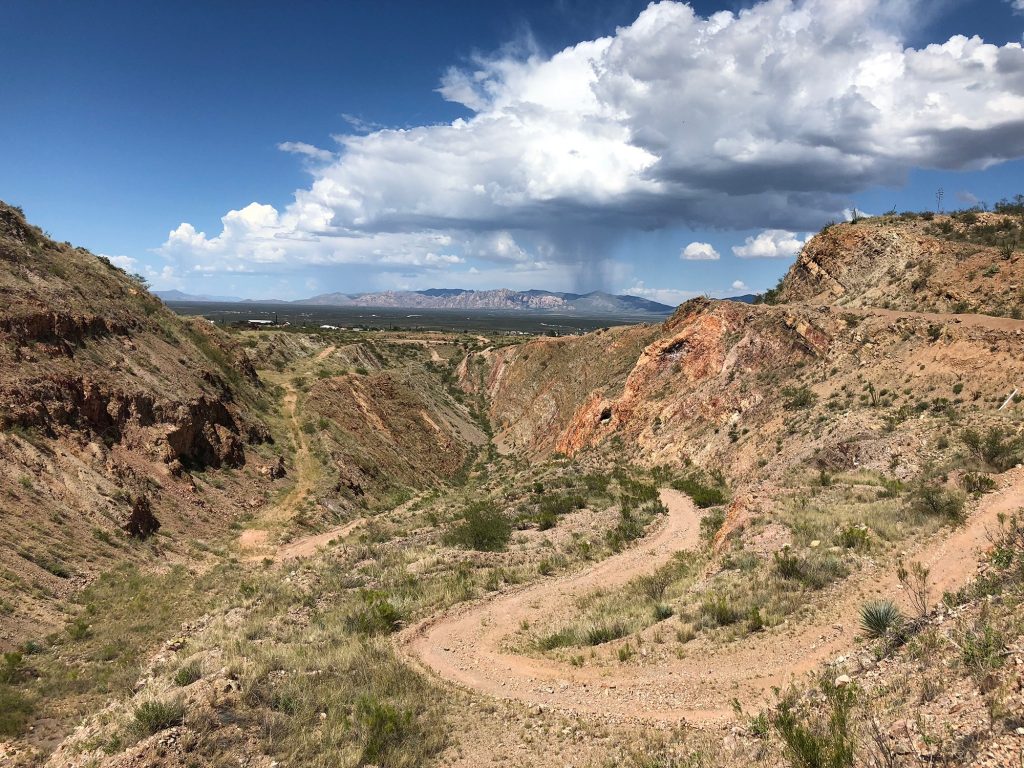Aztec Minerals sampling further expands high-grade gold and silver mineralization at Tombstone Project, Arizona

Aztec Minerals Corp. [TSXV-AZT; OTCQB-AZZTF] reported that the assay results of the 2024 surface reconnaissance exploration program at the Tombstone Project, Arizona, has discovered indications of broad gold-silver mineralization south of the Westside Target area and has discovered several additional mineralized zones outside of the Contention pit zone.
The field work verified specific, reported, key geologic, and historical mine features and found what could be potentially broad zones of alteration and mineralization for exploration west of the Contention Pit at the Tombstone project (which covers most of the historic Tombstone silver mining district in southeastern Arizona). Reconnaissance fieldwork identified several, laterally broad zones of alteration associated with many of the samples taken in the recently reported pit sampling program.
Selected surface sample highlights include 8.66 g/t gold, 225 g/t silver (11.47 g/t AuEq) ~120 metres west from No.3492, dump sample from a 1.0-metre thick limestone layer in outcropping Bisbee Formation siltstone with moderate argillization and strong Mn oxides, moderate Fe oxides. Roughly 100 metres above the area of the Last Chance/Arizona Queen CRD orebody (sample #3501);
4.94 g/t Au, 268.0 g/t Ag, (8.29 g/t AuEq) from a composite grab of outcropping Bisbee Formation siltstone with moderate silicification and argillization and strong quartz veinlets. The sample was taken ~100m above the area of the historic Last Chance/Arizona Queen CRD orebody. (sample # 3502); 3.79 g/t Au, 104.5 g/t Ag (5.10 g/t AuEq) from a 2.0m chip channel of outcropping Bisbee Formation siltstone with moderate silicification and argillization and strong quartz veinlets. The sample was taken ~100m above the area of the historic Last Chance/Arizona Queen CRD orebody. (sample #3492); 1.33 g/t Au, 366 g/t Ag (5.91 g/t AuEq) from the Westside No.1 shaft, a select sample of mineralized dump material, Bisbee Formation Hornfels with moderate argillization, strong iron oxides, moderate quartz veinlets. From the Westside fissure historic orebody (sample #3459); 0.60 g/t Au, 360 g/t Ag, (5.10 g/t AuEq) from a shaft on the Westside fissure system, a select sample of mineralized dump material, Bisbee Formation Hornfels with moderate argillization, strong iron oxides, moderate quartz veinlets (sample #3460).
The reconnaissance sampling had 41% of the samples returning AuEq assays of over 1 g/t AuEq. The field work verified the surface locations of key features such as the mineralized and mined Boss dike, the Westside fissure, and Westside No.1 and No.3 shafts.
The recently acquired knowledge of the mesothermal mineralization geological setting indicates a high potential for further discovery of wide oxide Gold Silver along strike and down dip of prospective hosting rocks outcropping in the Contention Pit areas.
Many of the high-grade gold-silver sample results are located immediately inside or adjacent to the Westside target area and indicate the strong potential to expand into multiple zones of broad Au-Ag oxide mineralization to the west.
Results of the Reconnaissance Sampling Program support the presence of broad, mesothermal, gold and silver oxidized mineralization and suggests the potential for further expansion of the mineralization footprint in the host formations down dip and along strike, including the potential extension westward of the historical Contention Pit
The primary objectives of the 2024 surface exploration program were to continue to expand and define the shallow, open pit-table, oxidized gold/silver potential mineralization, and to also develop targeting for the CRD mineralization historically demonstrated to be present at depth.
Aztec collected and analyzed (482) rock chip channel and reconnaissance samples for multi-elements including 422 mine-cut chip channel samples of 2 metres length each from the Contention pit with accessible, visible coloration and/or alteration and 60 outcrop and waste rock storage site reconnaissance composite and select samples over the rest of the project, including the Westside area, to expand and enhance geochemical and geological knowledge throughout the Tombstone project exploration targeting.
Project data evaluation also continues to advance including the 3D modeling of the historic mine workings, drilling and geologic data.
Aztec holds a 75% interest in the Tombstone Property Joint Venture, which includes most of the original patented mining claims in the main district as well as some recently acquired properties.
The main target of the 2023 core drill program was to continue testing the shallow, bulk tonnage, heap leachable, mesothermal gold-silver oxide mineralization adjacent and below the previously mined Contention pit by infill and step-out drilling.
The Tombstone project is located 100 km southeast of Tucson, Arizona and covers much of the historic Tombstone silver district.
Highlights: Well-located property on patented (33) and unpatented (42) claims (452.02 hectares/1,116.94 acres), covers much of the historic Tombstone silver mining district, great infrastructure, local town, road access, full services, water, power.
Historic silver district produced 32 million ounces of silver and 250,000 ounces of gold from 1878-1939, in high grade, oxidized, silver-gold-lead-zinc-copper vein, breccia and CRD deposits, and small open pit heap leach production in late 1980’s.
Drilling by Aztec in 2020-23 has demonstrated that the Contention Pit target has significant, shallow. oxidized Au-Ag bulk tonnage mineralization which is open in all directions.
Multiple other prospective target s in Cretaceous and Paleozoic rocks related to major NW and NNE trending structures hosting porphyritic intrusions crosscutting a possible caldera ring structure.
